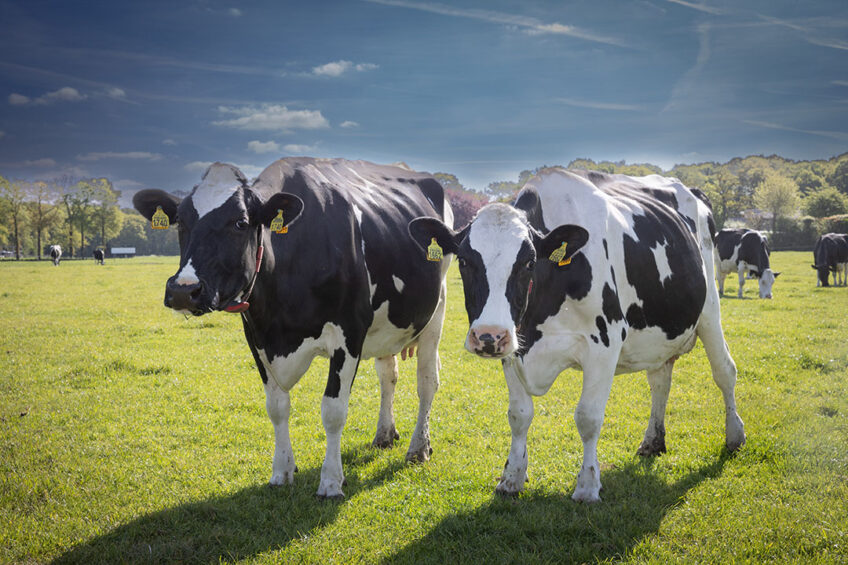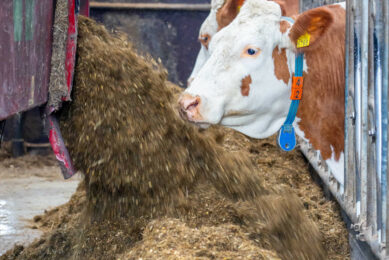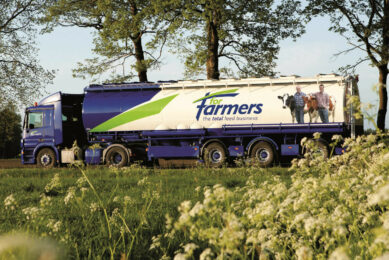UK milk producers urged to run genetic carbon audits

Dairy farmers are being asked to take part in genetic carbon audits as part of their drive to net carbon zero.
Improving genetics is the cheapest and most effective way to make permanent, long-term changes to a dairy herd’s performance. New data from the Agriculture and Horticulture Development Board (AHDB) shows this is as true for carbon footprints as for any other trait passed down through the generations.
Marco Winters, AHDB head of animal genetics, said the organisations’ tool EnviroCow – a genetic index designed to help farmers breed cows with longer lifespans and improved production, fertility and feed efficiency – was making a difference.
Cows with a 1-point higher score for EnviroCow don’t just produce 10% less methane in their enteric emissions – they also consume 10% less feed and produce a massive 33% higher weight of fat and protein in their lifetime than the average cow.
Launched 2 years ago, the AHDB says key findings include:
- EnviroCow shows a strong association with a range of actual recorded performance traits.
- Strong links with EnviroCow include FPCM, age at first calving, mature weight and lifespan.
- Cows which have high EnviroCow scores are calculated to have a lower DMI.
- Top 10% EnviroCow cows are calculated to produce 21% fewer methane emissions than the bottom 10%.
“Until now, the impact of EnviroCow on actual performance has never been demonstrated, but now, we have analysed the national herd to see how the index is linked to real life performance and associated emissions,” said Winters.
This was achieved by grouping cows according to their EnviroCow index, and then studying their phenotype and how they appeared or performed on farm. Traits across 475,000 cows examined that were of particular interest included:
- Yields of fat and protein correct milk (FPCM) over their lifetimes
- Age at first calving (AFC)
- Number of lactations
- Mature weight
- Stature
These are all traits that are known to influence dry matter intake (DMI), whether that intake is partitioned to growth, maintenance or production. In turn, DMI is proven to affect enteric methane production. Using published values which relate DMI to enteric emissions, it is possible to predict the total emissions from each animal.
“The fact that these cows were also of a smaller stature and lower liveweight is no surprise at all, as they weren’t bearing the high maintenance costs associated with bigger animals.”
“For instance, a high replacement rate, heavy mature liveweight or a delayed AFC will all impact lifetime emissions through the amount of feed required for rearing,” said Winters.
“Similarly, higher yields of FPCM will also increase total emissions due to higher feed requirements, but these will dilute the environmental cost of replacements and maintenance feed over an animal’s lifetime, so reducing emissions on a per kg FPCM basis.”
Winters said the reason why the top 10% of animals on the EnviroCows index had a low environmental footprint per litre was because, on average, they have higher lifetime yields of FPCM, a younger AFC, more lactations and longer lifespans, and so offer an excellent combination of traits required for efficient dairy production.
“The fact that these cows were also of a smaller stature and lower liveweight is no surprise at all, as they weren’t bearing the high maintenance costs associated with bigger animals.”
The bottom 10% of animals tended to be tallest, heaviest and had late AFCs and a shorter lifespan, with animals just lasting 2.57 lactations. They are also projected to produce 12% more methane than average per kg FPCM.
Join 13,000+ subscribers
Subscribe to our newsletter to stay updated about all the need-to-know content in the dairy sector, two times a week.










